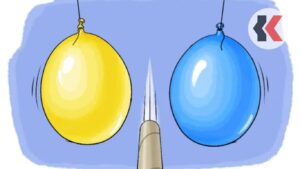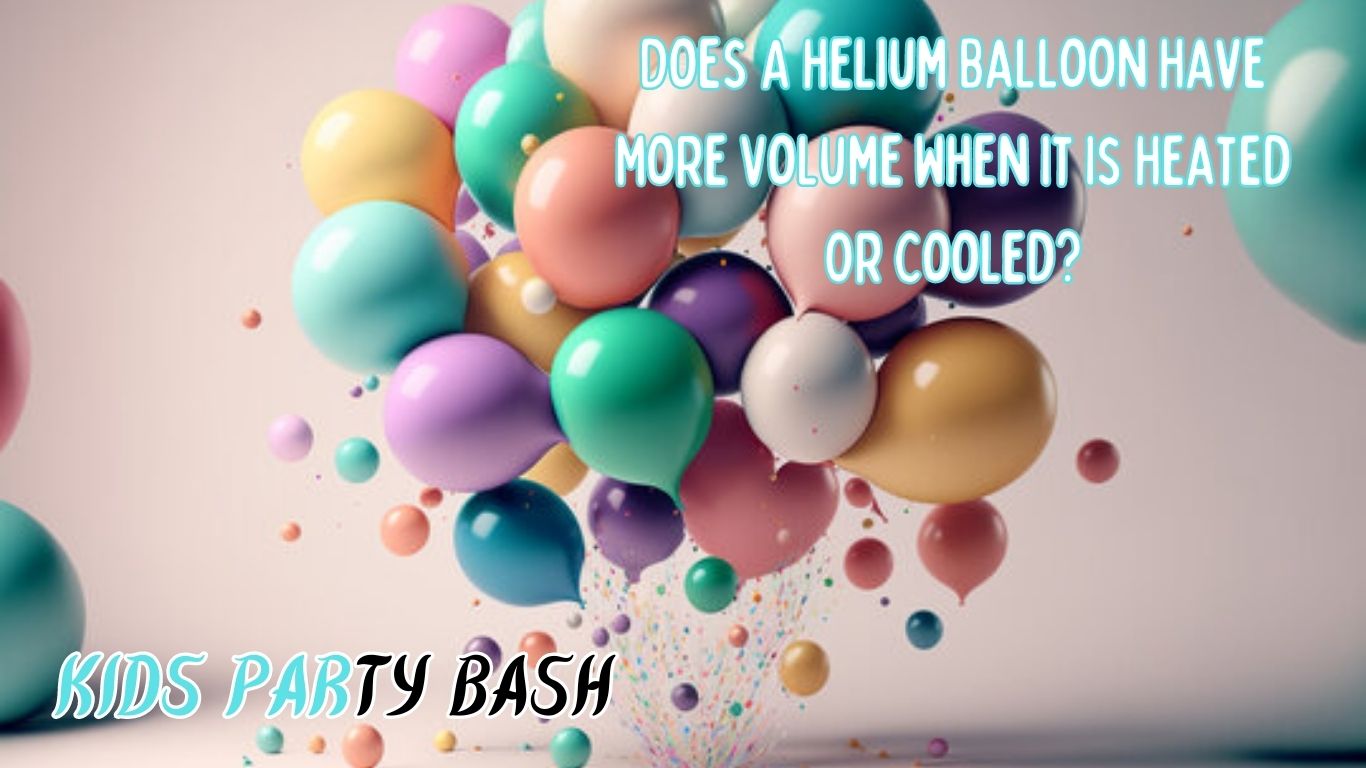Let’s get straight to the point. A helium balloon will have a larger volume when it’s heated and a smaller volume when cooled. This behavior aligns with the ideal gas law. But why? Dive with me into the intricacies of gases, balloons, and the wonderful world of thermodynamics!
The Nature of Gases
Helium: Not Just For Party Balloons Helium, a noble gas, is often found in balloons, from the ones we get for birthdays to those huge hot air balloons. When filled with helium, a balloon rises. But what exactly is happening inside the balloon?

Gas Inside The Balloon: It’s All About Molecules and Energy Gases, including helium, consist of tiny molecules zipping around, constantly colliding with each other and the walls of their container. The speed at which these molecules move is directly related to the temperature of the gas inside.
Hot Air Balloon: A Quick Glimpse Speaking of temperature, ever wondered why a hot air balloon rises? It’s because hot air is less dense than the cooler air outside the balloon. As the air inside the balloon gets heated, it expands, making the balloon rise.
The Intricacies of Volume and Temperature
Ideal Gas Law: A Fundamental Concept The ideal gas law tells us that the volume of a gas is directly proportional to its temperature, as long as the amount of gas and the pressure remain constant. Mathematically, this relationship is known as Charles’s Law.
Temperature Changes and Their Impact Ever put a balloon filled with helium outside on a hot day and noticed it expanding? Or observed it shrinking on a cold day? This change in volume is because the temperature of the gas inside the balloon directly influences its volume.
Cold Reality: The Effect of Low Temperatures If you were to expose a helium balloon to extremely cold temperatures, say by putting it in liquid nitrogen, its volume will decrease drastically. This is because the gas inside the balloon contracts as the temperature decreases, causing the balloon to shrink.
Pressure and Temperature: The Dynamic Duo
Air Pressure: A Balancing Act The atmospheric pressure outside the balloon plays a key role in determining the balloon’s volume. This is because the gas inside the balloon exerts a pressure that’s counteracted by the atmospheric pressure.
The Balloon Rises: Understanding Pressure Differences Here’s a fun fact: the reason a balloon filled with helium rises is because of the difference in pressure inside and outside the balloon. The helium gas inside the balloon has a lower density than the air outside, making the balloon float.

Conclusion: Volume, Temperature, and Balloons
To wrap things up, when it comes to helium balloons, their volume is closely tied to the temperature of the gas inside. As the temperature increases, the volume of the balloon expands; and as the temperature decreases, the balloon shrinks. This fascinating relationship is governed by the principles of the ideal gas law and is observed in different types of balloons, from party balloons to hot air balloons. So, next time you see a balloon rise or shrink, you’ll know the science behind its behavior!
Frequently Asked Questions (FAQ’S)
1. Do helium balloons expand when heated?
Yes, a helium balloon will have a larger volume when it’s heated due to the direct relationship between the volume of a gas and its temperature, as described by the ideal gas law.
2. Why does a helium balloon shrink in cold temperatures?
The gas inside the balloon contracts as the temperature decreases, causing the balloon to shrink. This behavior is consistent with Charles’s Law, which is a subset of the ideal gas law.
3. What role does atmospheric pressure play in a balloon’s volume?
The atmospheric pressure outside the balloon counteracts the pressure exerted by the gas inside the balloon, influencing its volume.
4. Why does a helium-filled balloon rise?
A balloon filled with helium rises because the helium gas inside has a lower density than the air outside, creating a difference in pressure that makes the balloon float.
5. Is the behavior of helium balloons influenced only by temperature?
While temperature plays a significant role in determining the volume of a helium balloon, other factors like atmospheric pressure and the amount of gas inside also affect its behavior.
6. What is Charles’s Law?
Charles’s Law states that the volume of a gas is directly proportional to its temperature, provided the amount of gas and the pressure remain constant.
7. Can other gases inside balloons behave the same way as helium when exposed to temperature changes?
Yes, the principles of the ideal gas law apply to all ideal gases. However, the exact behavior might vary based on the specific gas and its properties.


